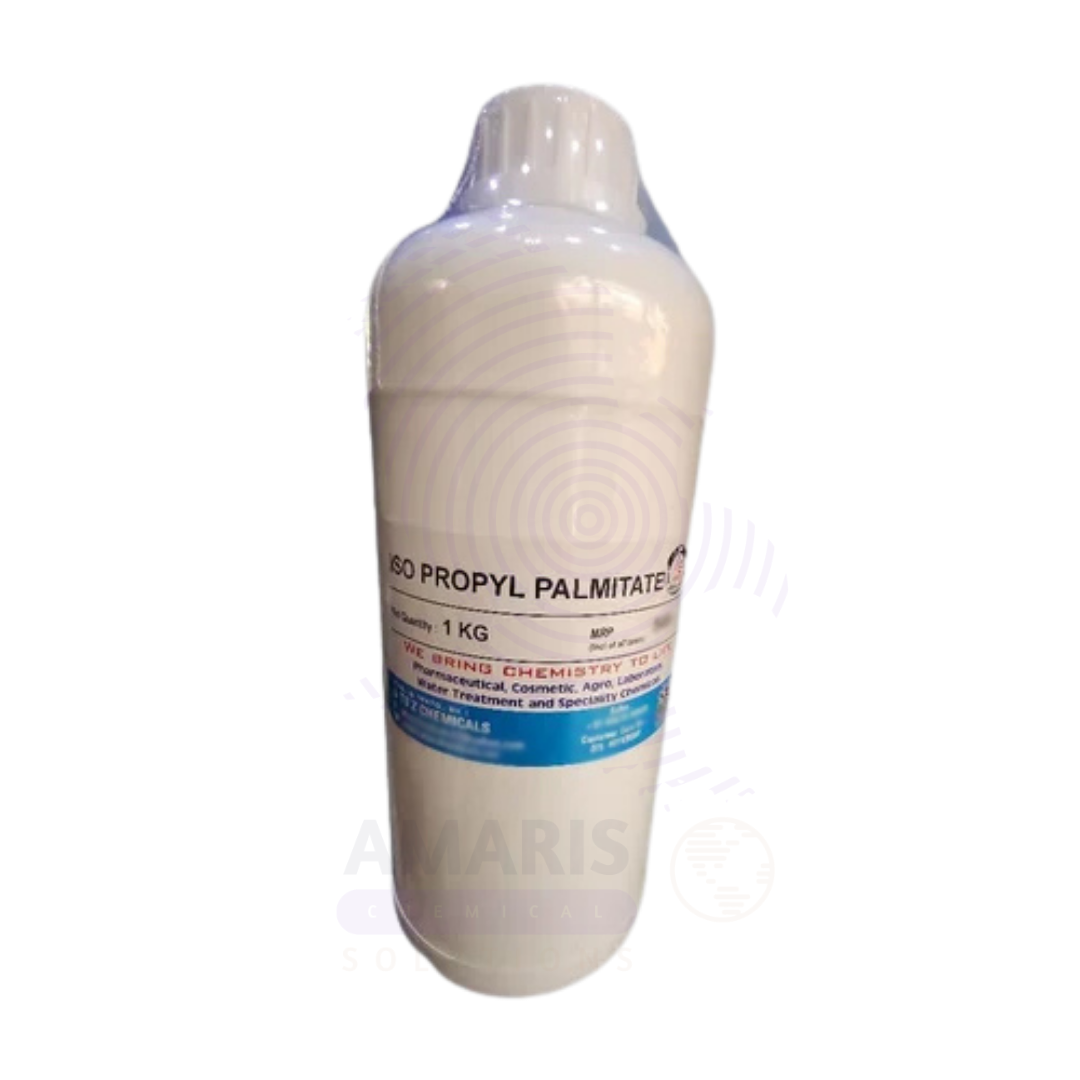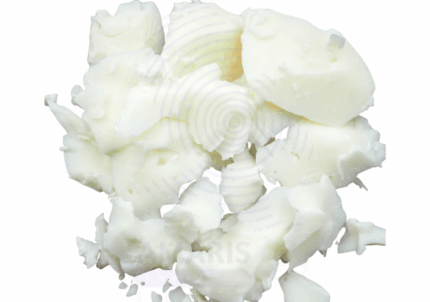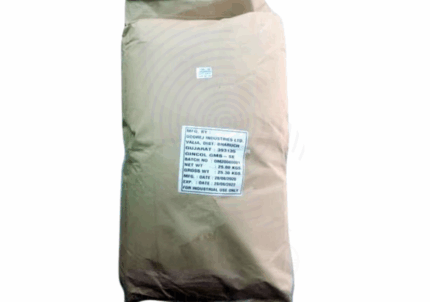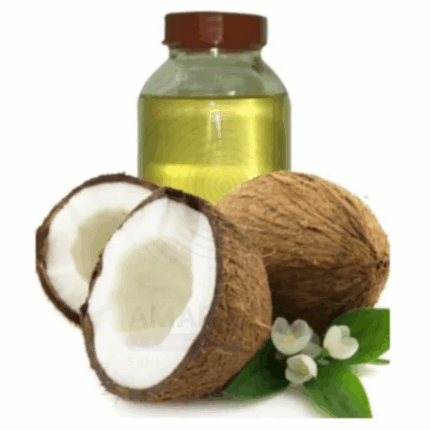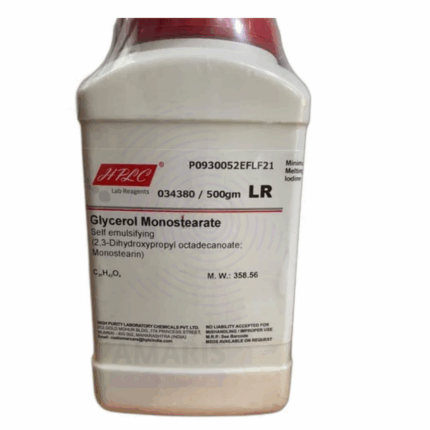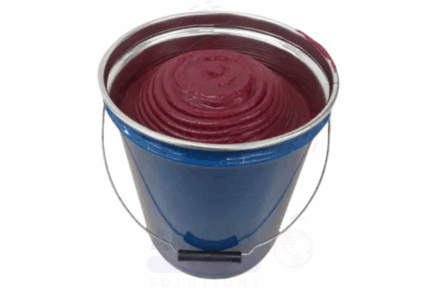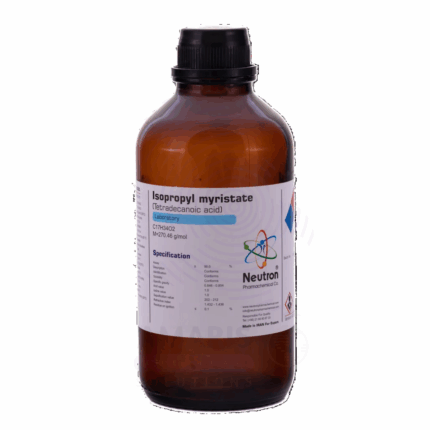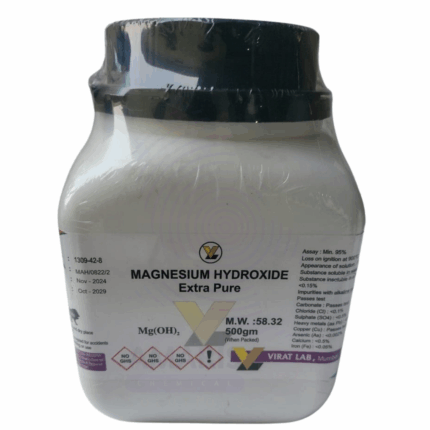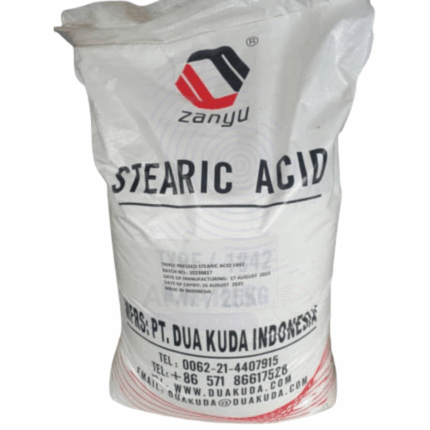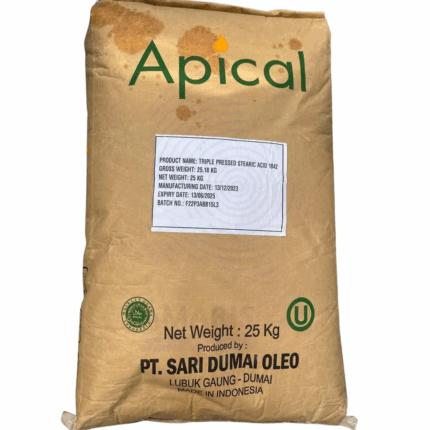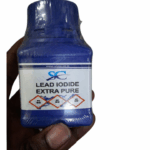

Isopropyl Palmitate Extra Pure
$ 35.65 Original price was: $ 35.65.$ 35.56Current price is: $ 35.56.
Isopropyl Palmitate Extra Pure is a highly refined ester of isopropyl alcohol and palmitic acid, known for its exceptional emollient, spreading, and moisturizing properties. This clear, colorless to pale yellow liquid is widely used in laboratory formulations focused on cosmetic, pharmaceutical, and personal care research. It is especially valued for its ability to impart a smooth, silky texture without an oily feel, making it ideal for lotions, creams, and topical products. In experimental applications, Isopropyl Palmitate serves as a non-greasy carrier, solvent, or skin-conditioning agent, aiding in the delivery of active compounds through the skin. Its extra pure grade ensures consistent performance and minimal impurities for sensitive applications.
Isopropyl Palmitate Extra Pure
Primary Uses
- Emollient Agent in Cosmetic Formulation Studies:
Commonly used as a model ester in lab research to develop creams, lotions, and topical preparations, especially in cosmetic science. - Solvent and Carrier in Delivery System Experiments:
Functions as a non-aqueous solvent and delivery vehicle for lipophilic (oil-soluble) compounds, especially in transdermal and dermal absorption studies. - Texture and Spreadability Testing:
Evaluated in product development experiments focused on the viscosity, feel, and spreading behavior of emulsions and oil-based products.
Secondary Uses
- Skin Permeation Enhancer:
Studied in pharmaceutical and dermatological labs for its role in enhancing transdermal penetration of active pharmaceutical ingredients (APIs). - Stability and Compatibility Testing:
Used in tests analyzing chemical stability and ingredient compatibility in emulsified and anhydrous formulations. - Model Compound in Fatty Ester Research:
Serves as a standard compound in academic and industrial research on fatty acid esters and their roles in topical delivery.
| PACK SIZE |
2.5 Litres Plastic bottle |
|---|
1. Basic Identification Attributes
- Product Name: Isopropyl Palmitate
- Chemical Name: Propan-2-yl hexadecanoate
- Grade: Extra Pure
- Chemical Formula: C₁₉H₃₈O₂
- Molecular Weight: 298.50 g/mol
- CAS Number: 142-91-6
- Appearance: Clear, colorless to pale yellow oily liquid
- Odor: Slight, characteristic ester-like odor
2. Composition
- Purity: ≥99% (Extra Pure grade)
- Main Component: Isopropyl Palmitate
- Impurities: Trace amounts of other esters or fatty acids
3. Physical & Chemical Properties
- Boiling Point: ~165–170 °C at 5 mmHg
- Melting Point: ~15–20 °C
- Flash Point: ~150 °C (closed cup)
- Density: ~0.85 g/cm³ at 25 °C
- Solubility: Insoluble in water; miscible with organic solvents and oils
- Stability: Chemically stable under normal laboratory conditions
4. Safety & Hazard Attributes
- GHS Classification:
✅ Not classified as hazardous under standard lab handling - Hazard Statements:
- Generally considered non-hazardous
- May cause slight skin or eye irritation with excessive exposure
- PPE Requirements:
- Safety goggles
- Nitrile or latex gloves
- Lab coat
- First Aid Measures:
- Skin Contact: Wash thoroughly with soap and water
- Eye Contact: Rinse cautiously with clean water
- Inhalation: Low volatility—move to fresh air if irritation occurs
- Ingestion: Rinse mouth; seek medical advice if symptoms develop
- Fire Hazards:
- Combustible liquid
- Use CO₂, dry chemical, or foam to extinguish fire
5. Storage & Handling Attributes
- Storage Conditions:
- Store in a tightly sealed container
- Keep in a cool, dry area away from oxidizing agents
- Protect from direct sunlight
- Handling Tips:
- Avoid contact with eyes and skin
- Practice good laboratory hygiene after handling
- No special ventilation required under normal use
6. Laboratory Applications
- Primary Uses:
- Non-polar solvent or carrier in formulations
- Emollient and dispersant in drug and cosmetic research
- Medium for dissolving lipophilic compounds in experiments
- Secondary Uses:
- Used in transdermal delivery system testing
- Standard emollient in stability and penetration studies
- Lubricating agent in physical property testing
- Component in developing in-vitro skin absorption models
SAFETY PRECAUTIONS
Personal Protective Equipment (PPE):
- Wear lab coat, nitrile gloves, and safety goggles.
- Work in a well-ventilated area or use a fume hood to avoid inhalation of vapors.
Handling:
- Avoid contact with eyes, skin, and clothing.
- Do not inhale vapors or mist.
- Wash hands thoroughly after handling.
- Handle away from heat and open flames.
Storage:
- Store in a tightly closed container.
- Keep in a cool, dry, well-ventilated area.
- Protect from light and sources of ignition.
- Keep away from oxidizing agents.
FIRST AID MEASURES
Inhalation:
- Move person to fresh air.
- Seek medical attention if symptoms such as dizziness or respiratory irritation occur.
Skin Contact:
- Wash with mild soap and water.
- Remove contaminated clothing.
- Seek medical attention if irritation develops.
Eye Contact:
- Rinse thoroughly with water for several minutes.
- Remove contact lenses if present and easy to do.
- Get medical attention if irritation persists.
Ingestion:
- Rinse mouth with water.
- Do not induce vomiting.
- Seek immediate medical advice.
FIRE FIGHTING MEASURES
Flammability:
- Combustible liquid—can ignite at high temperatures.
Extinguishing Media:
- Use dry chemicals, carbon dioxide (CO₂), or foam.
- Water spray may be used to cool containers but not as a primary extinguishing agent.
Hazardous Combustion Products:
- May emit carbon oxides (CO, CO₂) under fire conditions.
Firefighter Protection:
- Use self-contained breathing apparatus (SCBA) and wear full protective gear.
- Keep containers cool with water spray if exposed to fire.


 Preservatives(food)
Preservatives(food) Flavor Enhancers
Flavor Enhancers Acidulants
Acidulants Sweeteners
Sweeteners Antioxidants
Antioxidants Colorants(food)
Colorants(food) Nutraceutical Ingredients (food)
Nutraceutical Ingredients (food) Nutrient Supplements
Nutrient Supplements Emulsifiers
Emulsifiers
 Collectors
Collectors Dust Suppressants
Dust Suppressants Explosives and Blasting Agents
Explosives and Blasting Agents Flocculants and Coagulants
Flocculants and Coagulants Frothers
Frothers Leaching Agents
Leaching Agents pH Modifiers
pH Modifiers Precious Metal Extraction Agents
Precious Metal Extraction Agents
 Antioxidants(plastic)
Antioxidants(plastic) Colorants (Pigments, Dyes)
Colorants (Pigments, Dyes) Fillers and Reinforcements
Fillers and Reinforcements Flame Retardants
Flame Retardants Monomers
Monomers Plasticizers
Plasticizers Polymerization Initiators
Polymerization Initiators Stabilizers (UV, Heat)
Stabilizers (UV, Heat)
 Antifoaming Agents
Antifoaming Agents Chelating Agents
Chelating Agents Coagulants and Flocculants
Coagulants and Flocculants Corrosion Inhibitors
Corrosion Inhibitors Disinfectants and Biocides
Disinfectants and Biocides Oxidizing Agents
Oxidizing Agents pH Adjusters
pH Adjusters Scale Inhibitors( water)
Scale Inhibitors( water)
 Antioxidants(cosmetic)
Antioxidants(cosmetic) Emollients
Emollients Fragrances and Essential Oils
Fragrances and Essential Oils Humectants
Humectants Preservatives
Preservatives Surfactants(cosmetic)
Surfactants(cosmetic) Thickeners
Thickeners UV Filters
UV Filters
 Fertilizers
Fertilizers Soil Conditioners
Soil Conditioners Plant Growth Regulators
Plant Growth Regulators Animal Feed Additives
Animal Feed Additives Biostimulants
Biostimulants Pesticides (Herbicides, Insecticides, Fungicides)
Pesticides (Herbicides, Insecticides, Fungicides)
 Active Pharmaceutical Ingredients (APIs)
Active Pharmaceutical Ingredients (APIs) Excipients
Excipients Solvents(pharmaceutical)
Solvents(pharmaceutical) Antibiotics
Antibiotics Antiseptics and Disinfectants
Antiseptics and Disinfectants Vaccine Adjuvants
Vaccine Adjuvants Nutraceutical Ingredients (pharmaceutical)
Nutraceutical Ingredients (pharmaceutical) Analgesics & Antipyretics
Analgesics & Antipyretics
 Analytical Reagents
Analytical Reagents Solvents(lab)
Solvents(lab) Chromatography Chemicals
Chromatography Chemicals Spectroscopy Reagents
Spectroscopy Reagents microbiology-and-cell-culture-reagents
microbiology-and-cell-culture-reagents Molecular Biology Reagents
Molecular Biology Reagents Biochemical Reagents
Biochemical Reagents Inorganic and Organic Standards
Inorganic and Organic Standards Laboratory Safety Chemicals
Laboratory Safety Chemicals Specialty Laboratory Chemicals(Special Laboratory Equipment)
Specialty Laboratory Chemicals(Special Laboratory Equipment)
 Demulsifiers
Demulsifiers Hydraulic Fracturing Fluids
Hydraulic Fracturing Fluids Scale Inhibitors(oil)
Scale Inhibitors(oil) Surfactants(oil)
Surfactants(oil) Drilling Fluids
Drilling Fluids
 Dyes and Pigments
Dyes and Pigments Bleaching Agents
Bleaching Agents Softening Agents
Softening Agents Finishing Agents
Finishing Agents Antistatic Agents
Antistatic Agents
 Admixtures
Admixtures Waterproofing Agents
Waterproofing Agents Sealants and Adhesives
Sealants and Adhesives Curing Compounds
Curing Compounds Concrete Repair Chemicals
Concrete Repair Chemicals Anti-Corrosion Coatings
Anti-Corrosion Coatings
 Surfactants(cleaning)
Surfactants(cleaning) Builders
Builders Enzymes
Enzymes Solvents (Cleaning)
Solvents (Cleaning) Fragrances
Fragrances
 Electronic Chemicals
Electronic Chemicals Catalysts
Catalysts Lubricants
Lubricants Photographic Chemicals
Photographic Chemicals Refrigerants
Refrigerants Automotive chemicals
Automotive chemicals Pyrotechnic Chemicals
Pyrotechnic Chemicals
 Biodegradable Surfactants
Biodegradable Surfactants Bio-based Solvents
Bio-based Solvents Renewable Polymers
Renewable Polymers Carbon Capture Chemicals
Carbon Capture Chemicals Wastewater Treatment Chemicals
Wastewater Treatment Chemicals
 Pigments
Pigments Solvents(paint)
Solvents(paint) Specialty Coatings
Specialty Coatings Binders/Resins
Binders/Resins Additives
Additives Driers
Driers Anti-Corrosion Agents
Anti-Corrosion Agents Functional Coatings
Functional Coatings Application-Specific Coatings
Application-Specific Coatings
 Fresh Herbs
Fresh Herbs Ground Spices
Ground Spices Whole Spices
Whole Spices Spice Blends
Spice Blends Dried Herbs
Dried Herbs
 Leavening Agents
Leavening Agents Dough Conditioners
Dough Conditioners Flour Treatments
Flour Treatments Fat Replacers
Fat Replacers Decoratives
Decoratives Preservatives(baking)
Preservatives(baking)
 Plasticizers & Softeners
Plasticizers & Softeners Reinforcing Agents
Reinforcing Agents Adhesion Promoters
Adhesion Promoters Vulcanizing Agents
Vulcanizing Agents Antidegradants
Antidegradants Blowing Agents
Blowing Agents Fillers & Extenders
Fillers & Extenders Accelerators & Retarders
Accelerators & Retarders